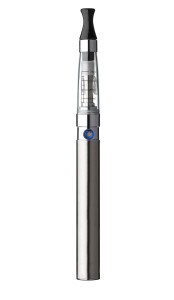Top 10 in VAPING trend | by

Health experts say popularity clouds good news of tobacco decline
With “vaping” up and tobacco use down among U.S. youth, the relatively new “e-cigarette” trend has been grabbing headlines. This spring, the Centers for Disease Control and Prevention released results of a youth survey that found e-cigarette use had tripled in one year, from 2013 to 2014. The director called the news “alarming.” But the report came on the heels of another finding: the National Institute on Drug Abuse’s 2014 Monitoring the Future Survey revealed the lowest rate of tobacco use among adolescents since the survey began in 1975. For those who know little about the vaping trend, here’s a snapshot.
1. E-cigarettes
Designed to look like the real thing, e-cigarettes contain a battery-operated heating element and replaceable cartridge, which holds the liquid ingredients (water, glycerol, propylene glycol), sometimes laced with nicotine and flavorings. They are sold at gas stations and convenience stores and have been largely bought out by big tobacco companies. When a user takes a puff, the heating element turns the liquid to vapor. The user inhales and exhales the vapor, mimicking smoking.
 2. Vape products
2. Vape products
E-cigarettes have evolved since hitting the U.S. market in 2007, with larger “personal vaporizers,” or PVs, (on left) more popular among the “vaping” community and sold at specialty stores. These have refillable, rather than replaceable, cartridges and allow for more capacity and battery life. Buying the liquid, or “e-juice,” for refills potentially lowers the cost of vaping. Vape Mods (on the right) are for the even-more-serious “vaper.”
3. History
Although earlier inventors created similar products, they were never commercialized, and today’s e-cigarettes are credited to Chinese researcher Hon Lik, who reportedly invented the device after his father died of lung cancer from heavy smoking. Lik has said the idea came to him in dream in which he was drowning in a sea that turned to vapor.
4. Culture
Vaping has created a subculture, with everything from vaping meetups and events to Facebook pages and “cloud-blowing” competitions. The “vape world” has its own lingo, whether it’s “APV” for advanced personal vaporizer or “analog” for a traditional (thus non-digital) cigarette.
5. Stealth factor
Because vaping devices emit no odor, health officials worry about users, particularly youth, veiling nicotine and drug use. “With a cigarette, you can smell that,” says Dr. Larry Wolk, executive director of the Colorado Department of Public Health and Environment. “With these, whether it’s vaporized nicotine or vaporized marijuana, it’s easy to conceal that smell.”
6. Safety
Manufacturers note that vaping ingredients (other than nicotine) are all food-grade. Vaping does not create tobacco’s combustible toxins, such as tar and carbon monoxide. But health experts argue that, due to lack of regulation and studies, safety is uncertain. “What the impact of those substances is on the lung tissue is unknown,” Wolk says.
7. Regulation
The Food and Drug Administration had, as of deadline, failed to act on e-cigarette regulation. “I think the FDA had the opportunity long ago to regulate these things and didn’t,” says Arnold Levinson, investigator with the University of Colorado Cancer Center and Director of the University Health Smoking Cessation Service. “They have fallen asleep at the wheel, and now the horse is out of the barn.” In Colorado, some municipalities have begun to ban vaping in public places, and sale of products is limited to people 18 and older.
8. Marketing

9. Youth
Health officials are also concerned about vaping’s popularity surge among youth. “What we know so far is that kids are trying these things in droves,” Levinson says. But other experts point to a dramatic drop in tobacco use among kids, which vapers say should be considered a boon. “I don’t think I, or any of the experts, are willing to go there, because we just don’t have the data to show that they’re safer,” Wolk says. Although users can, and, according to manufacturers, often do, buy non-nicotine “e-juice,” health officials worry about another generation of nicotine addicts and the effects nicotine can have on developing teen brains.
10. Cessation aid
Anecdotal evidence that e-cigarettes have helped smokers kick the habit and feel better abound, but health officials say vaping devices have not been tested as cessation aids. “Now it is highly plausible that these things might become another aid to people who are really committed to quitting smoking,” Levinson says. But definitive answers are years away, he says. “I’m not one of these people who thinks we should drive these things out of existence. But we are seeing all of these unwanted social side-effects. That’s the real issue.”
Tags: smoking
Leave a Comment
Please be respectful while leaving comments. All comments are subject to removal by the moderator.

